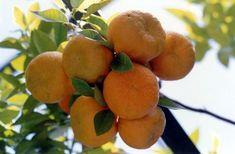
The UK citrus category was worth a little more than £500 millon in the 52-weeks to January 2005, a year in which consumer penetration rose slightly across most of the sub-sectors but overall category value remained on an even keel.
The last three years have been characterised by the continuation of the upward curve for easy peelers, which have now embedded themselves well and truly as the category captains through sheer weight of year-round offer and the flexibility they offer to retail merchandisers.
In the year to January 5, 2003, 78.6 per cent of the UK’s consumers purchased from the easy peeler sub-category at least once. Two years down the line, that year-end figure has risen to 80.1 per cent. One small step for the global citrus outlook maybe, but nevertheless a giant leap in UK market penetration terms.
However, a closer look reveals that while overall easy peeler sales rose by more than £30m in the three-year sales period, more than 90 per cent of that value rise was achieved in the year from January 2003 to January 2004, when penetration remained static. The obvious conclusion to be drawn from all of that is that the supermarket price wars have succeeded to a certain extent by enticing additional customers into the category, but the consumer has been the major beneficiary of the lower price ticket.
Within the easy peeler sector, the TNS data illustrates the truth in the story that the UK is the last remaining bastion for the satsuma. Sales leapt from £85.8m to £102.8m in the period and penetration shot up from 58.5 per cent to 62.7 per cent. Satsumas are in fact the second most-purchased individual citrus line - behind the navel orange - in the UK, if the figure is correct, although there may be some room for error caused by incorrect labelling and mis-representation of fruit during data collection.
This suspicion is further enhanced by the figures for clementines, which despite being hailed as the rising stars, have seen sales level out at just under £97m and penetration also stabilising, according to the figures. And mandarin sales are said to have risen by nearly 40 per cent, to £43.5m, while penetration showed a healthy rise from 33 per cent to 38.9 per cent.
In the same time span, oranges have seen their penetration figure drop from 61.4 per cent to 60.3 per cent, again a continuation of what is becoming a fairly well-set trend. Innovation in the field is beginning to fuel a return of some optimism that the decline can at least be halted and, interestingly, lower penetration has been accompanied by a rise in values. Oranges were valued at £152.7m in the year to January 5, 2003, but £160.5m by January 2, 2005.
The value of lemons in the UK retail sector has increased by 15 per cent to £34.5m on the back of a more modest two per cent rise in penetration, to 49.6 per cent, driven in part by a low-key drive to give consumers more knowledge of usage options for the fruit. From a decidedly lower base, the lime sector has also prodded its share of the citrus cake forward, by around 10 per cent to £4.5m. Both lines are attempting to extricate themselves from the gin and tonic club, and these figures illustrate that success may be forthcoming. Either that or the number of UK-based G&T swillers is making a resurgence. Certainly, the wider use of lime as a beer accompaniment has boosted sales.
Other established and recognised patterns are still evident in the TNS data. Pink grapefruit sales have risen over the period, with the latest 12-month period showing a sizeable jump in value to £33m, in a year which saw penetration recover to 19.9 per cent after a two per cent fall in the previous, weather-affected year. On the other side of the sector, white grapefruit sales have increased in the UK by around six per cent in value terms in the last three years, but only 14.8 per cent of consumers purchased white fruit last year, compared to the 16.3 per cent who popped it in their shopping basket at least once during 2002.



